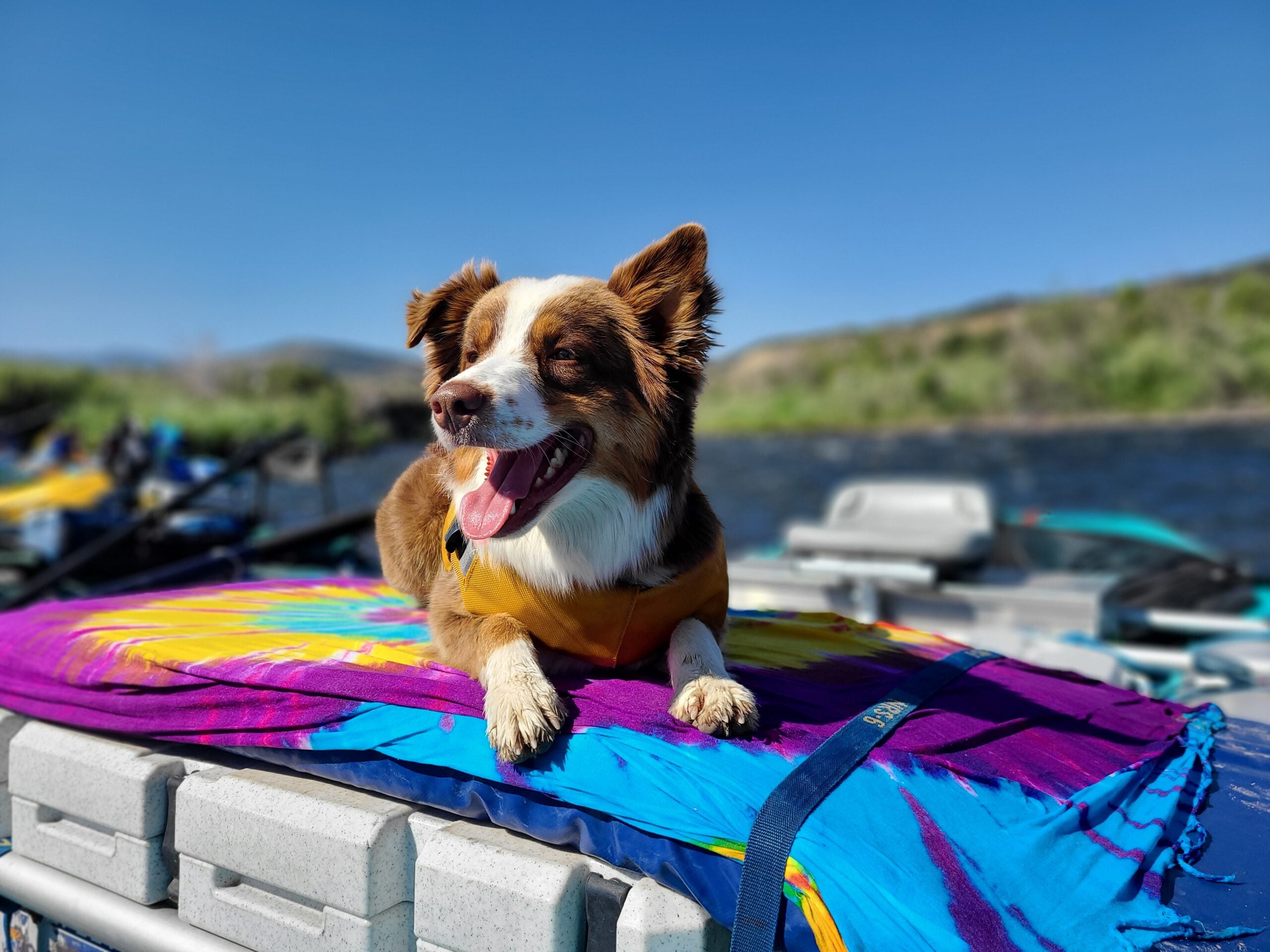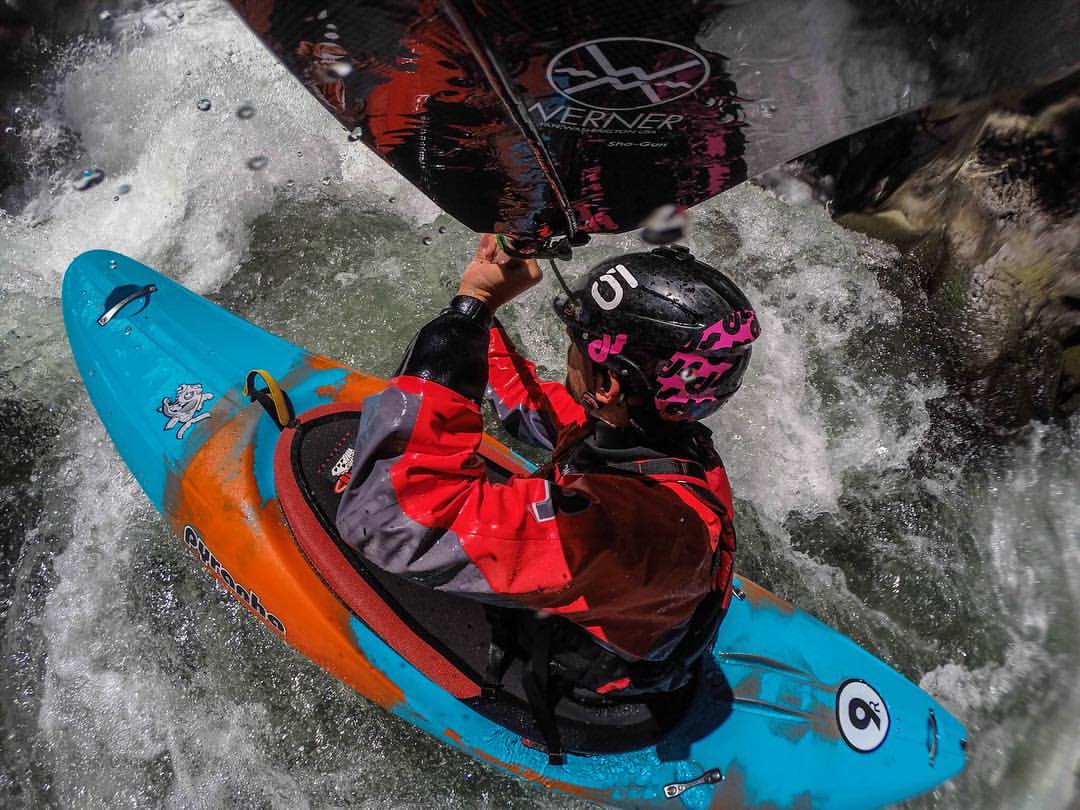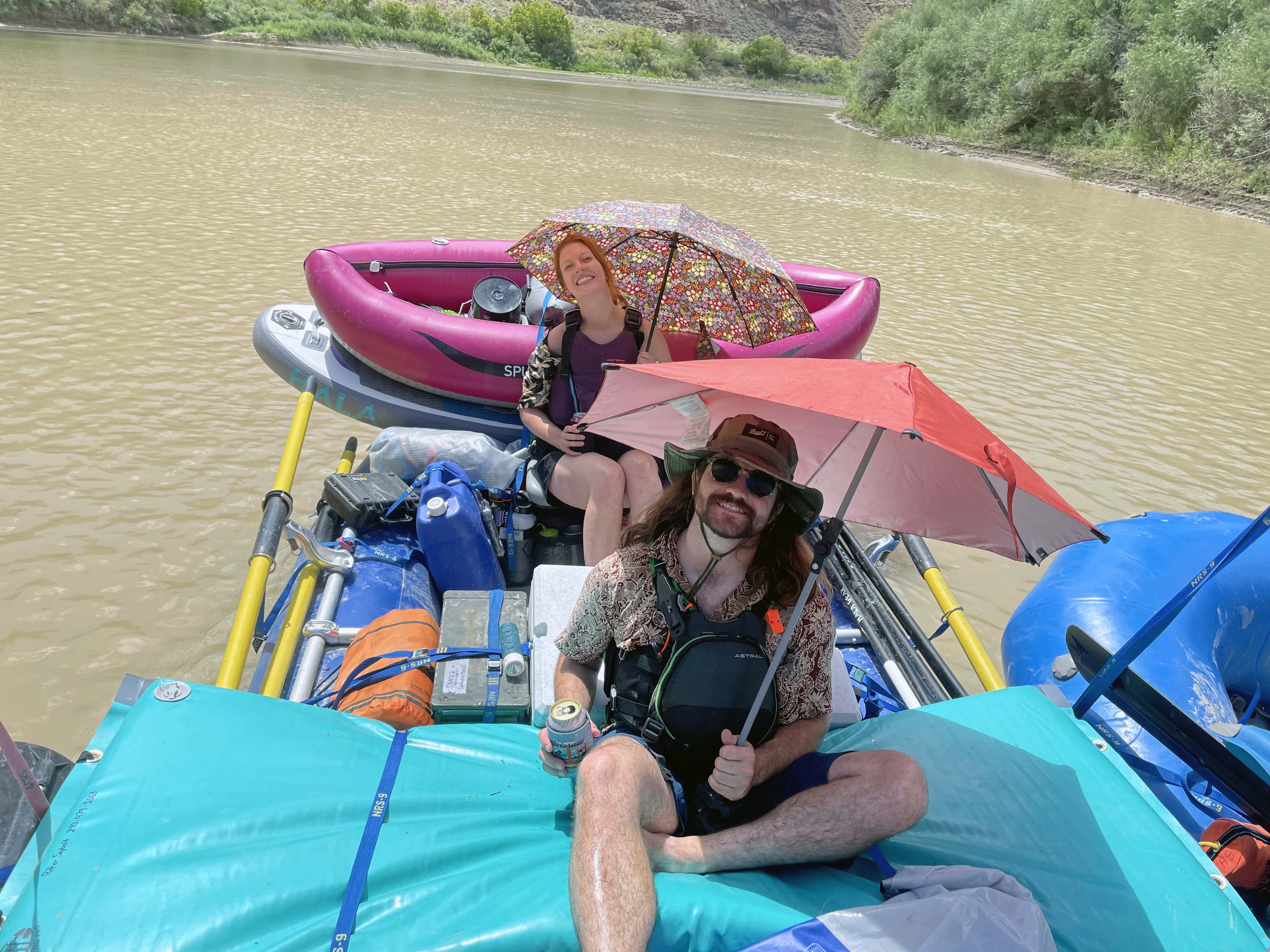For many of us, our pets are our children and respected as part of our family unit. We often include our dogs in just about everything we do, and for my wife and I, that means a lot of floating down rivers on rafts. Our dogs have always been a part of our river lifestyle, and we wouldn’t have it any other way.
When you think about the ideal river dog, you probably think about a retriever breed that can swim really well and is addicted to being in and around water.
So, when my wife came home from Kansas with a Miniature Australian Shepherd puppy, I wasn’t really sure what to expect…

Hazel is now 3 years old and has become the ultimate river dog. Whether she’s perched on thwarts in a paddleraft or hunkered down between passengers on big water oar rigs, there isn’t much the river throws her way that phases this seasoned river pup!

Recently, we put Hazel to her biggest test yet: a 7-Day Wilderness River Trip on the Snake River through Hell's Canyon on the Idaho/Oregon border. This trip featured flows of over 15,000 CFS and several big Class IV rapids, as well as many miles of floating in close to 100 degree temperatures.

How’d Little Hazel do?
She crushed it! She had a blast and handled the rigorous expedition lifestyle with ease. We knew she was physically and mentally ready for the experience; We have been working up to a trip like this with her since she was the size of a potato.
How We Got Hazel into the River Lifestyle
Hazel’s first river experience was when she was only nine weeks-old, on an overnight trip on the Green River through Flaming Gorge.
By the time she was one year old, she was running continuous class III sections on paddle rafts with us on the Arkansas River as well as coming along on countless float trips on the Upper Colorado.
When life says an adventure is too big for her, she says “Hold my water bowl” and proves us wrong!
There were several skills we needed to work with her on closely before we were comfortable taking her on a trip like this.

First and Foremost is Obedience
Success with your animal on the river comes from an understanding that you are in control of the situation at all times. More than anything else, this means you need to really work with your dog on impulse control.
Part of the reason that Hazel is such a good river dog is that she is not “uncontrollably obsessed” with water. She enjoys being around it, but she’s not so instinct-driven that obedience goes out the window within 100 feet of water like many lab breeds I’ve seen.
She likes to swim, but her first instinct is not to fire off the boat like a furpedo when she sees a goose a hundred yards away; she keeps her impulses in check because she and we have worked very hard on it.

Obedience Part 2: Off Leash Behavior and Control
The second part of the obedience skillset is that your dog needs to be comfortable with being off-leash. After all, you wouldn’t tie yourself to your rig, so you should never tie your dog to it either.
Being off-leash is a huge responsibility for both you and your dog. You relinquish control of the situation for your dog’s safety, and your dog needs to understand that they have to behave. Not every dog can handle this responsibility. You need to start while they are young and work hard at developing the privilege for your dog to be off leash thanks to careful and consistent training.
This isn't an excuse not to follow regulations at put-ins and take-outs that require your dog to be on leash. It's probably the best plan to keep them on leash until you are about to launch, so they aren't wandering while people are backing trailers, kids are running around, etc.
Obedience Part 3: Control Excessive Barking

Barking is something that we can only control so much. Some dogs just can’t help but bark to express their excitement around water activities. That said, others on the river shouldn’t have to tolerate your dog’s excessive barking for hours on end.
We are VERY lucky that Hazel is fairly quiet in her demeanor and calms down on command 98% of the time she’s barking. Her breed is not known for this. We haven’t had to work very hard on this with her, she knows we don’t like it when she barks a lot so she doesn't do it often.
Swimming in Moving Water
Another obvious and super important skill you need to be sure your dog is rock-solid on is swimming in moving water. A dog that is a champ swimming in the lake might be overwhelmed in the river if they haven’t grown up navigating current and eddies while swimming.

We made sure Hazel learned to swim in the river first, watching other dogs on a riverbank and splashing around in shallow eddies.
She innately understands that she needs to:
- Account for current when swimming between points in a river
- Naturally hold a ferry angle when swimming
- Swims to eddies if she’s going for the riverbank
I’ve found the best training technique for this was making her chase sticks and tennis balls into slow current from eddies.
She learned how to adjust her swimming when trying to hit a floating target and became more comfortable with moving water over time.
Know Your Dog's Limits
We know there is a responsible limit to including Hazel in our river experiences. There are times that we pushed the envelope and regretted it a bit.
We once had a weird pin in a Class III rapid on the Arkansas River. I had to set Hazel on the rock we were pinned on, un-pin the raft, and whip back around to grab her as we started to float away... She wasn’t thrilled but took the experience like a champ.
Looking back, the section wasn’t over her head, but still not the most responsible moment as a fur-daddy. It proved to me that anything can happen with your pet on the river; you need to be prepared for anything and everything when your pet is involved.
We never take her on continuous Class IV sections or Class V for obvious reasons.
If it's particularly dangerous for us, there’s no good reason to throw a dog into the mix, too.
Remember that every dog has a limit, especially if you are pushing your own limit.
Great K-9 Gear
We’ve always made sure Hazel has a good PFD that fits her well. Since we started her so young on the water, her first life jacket was one rated for dogs less than 10 pounds!
She’s now on her fourth PFD that’s made by NRS, and now that she’s topped out around 35 pounds we have lent the PFDs that used to fit her to other friends getting their pups into the sport.
We recommend the NRS CFD or the Astral Bird Dog PFD to our friends, as they feature the same high-quality flotation used on PFDs for humans, and come in a wide variety of sizes to best-fit your dog.

You will also always want to start traveling with a medical kit on the river. Being able to bandage sliced pads, torn toenails, or other injuries is important to keeping your dog comfortable.
Pro Tip: Always bring tweezers and scissors. There are a lot of burrs on the riverbank and sometimes the best way to get them out is to cut the clump of hair that’s caught up in them.
Mythbust
Your dog will not pop your raft. A lot of people look at me funny when I am loading Hazel onto a raft like she's going to pop it with her nails. I wouldn’t be trusting my life and safety to something that could be popped by a dog’s toenails, trust me.
If you have a PVC boat and your dog’s toenails haven’t been trimmed in awhile, it might leave a mark on rare occasions but that's really it.

Final (But Important!) Tip for the Trip
Your dog is always barefoot and surfaces heat up way more than you think. From the sand on a beach, to the diamond-plate decking on your frame, to the blacktop at the take out, she’s going to be walking on hot surfaces all day.
Be cognizant of this and ‘hand test’ the surfaces they are walking on often. If it’s too hot to keep your hand there for 5 seconds, make a better choice for your dog.
Soak it down with water, or try to walk in the shade!

Pro Tip: Wet down a towel or tapestry to put over the cooler pad so that it doesn't heat up too much in the sun!
If floating with your furry best friend is what you want to do, make sure to work with them to get them to a level where they’re comfortable and responsible with the activity. The excited squeals as you load up to launch are more than worth it!
Written by Jake Castle. All Photos by Amanda Castle.





